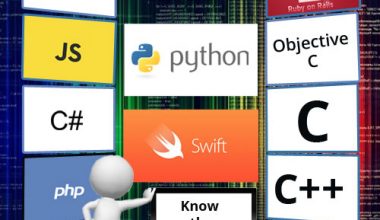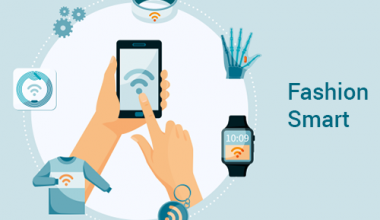With a new version of the iPhone in the works, the clock is ticking for AT&T Inc. to get its much-criticized network ready for the looming battle.
The carrier has taken a beating from consumers who have complained about poor coverage in major cities including New York and San Francisco. Now, AT&T is racing to reduce its dropped calls and speed up Web-surfing before Apple Inc. releases a new version of the iPhone that could run on Verizon Wireless’s network.
In mid-December, AT&T executives set up a 100-day plan to dramatically improve the company’s network in densely-populated cities, according to people familiar with the plan. Since then, AT&T has added new network spectrum to better handle traffic, repositioned antennas to improve reception in office towers and wired more neighborhood cell towers with faster connections.
But even with its recent efforts, the network still has not met customers’ quality standards everywhere. While some third-party tests have given AT&T nods for having a faster network, a poll last month by J.D. Power & Associates found AT&T still ranks poorly against Verizon Wireless in call quality.
Some analysts say the scramble to add more capacity might still fall short. “They haven’t fixed the network and they’re going to see a huge exodus to Verizon” when it gets the iPhone, said Edward Snyder, managing director of Charter Equity Research, a financial research firm that studies the cellular phone industry.
AT&T defended its wireless efforts, and said this year it expects to spend $2 billion more on build-outs for its wireless network and add twice as much capacity as it did in 2009. A spokesman declined to provide details on its spending last year.
It argues that its growing pains with the iPhone position it to provide better service than any rivals picking up the smart phone for the first time.
AT&T “is managing volumes that no one else has experienced,” said John Donovan, the company’s chief technology officer. It has improved service in big-city markets and expects “continued improvement in those markets in the coming months,” he said.
For example, AT&T said when iPhone customers started checking their email and surfing the Web from their high-rise offices, AT&T repositioned its cellular antennas to point up, instead of down. Rivals will start the process of making the same changes only after the phones hit their networks, it said.
The iPhone taught AT&T other lessons its rivals will discover through customer trial-and-error. Before the iPhone, it used to be able to accurately forecast to the minute the type of phone usage each new customer would add to its network based on basic demographics such as age and income levels. The forecast always held true across cities and towns.
But with the iPhone, such bets are off, AT&T executives painfully learned. It now looks at a broader set of customer profiles to forecast behaviors. For example, in a metro area with a large proportion of students, the phone operator schedules network upgrades to occur outside of colleges’ nine-month academic terms.
“I’m as interested now in what you’re doing when you’re not on the network,” said John Stankey, head of AT&T’s operations arm.
A Verizon-compatible iPhone is slated for mass production as early as September, according to people briefed on the matter. On Tuesday, several analysts said they expect that AT&T’s exclusivity will last only until the end of this year.
“It probably won’t ship in 2010 because of the extension on exclusivity that AT&T got but they’ll be sitting on trucks ready to roll,” said Charter Equity’s Mr. Snyder.
A Verizon Wireless spokesman declined to comment. Verizon Wireless is jointly owned by Verizon Communications Inc. and Vodafone Group PLC.
Of course, there are some network roadblocks even AT&T can’t steam roll. Getting permission from municipal councils to tear up streets or convincing landlords to provide access to buildings to add more radio boxes takes time, executives said.
Laying down higher-bandwidth cables to cell towers is labor intensive. And installing special radio-routing equipment can only be done in the middle of the night to prevent network outages.
At times, the carrier has gotten help from Apple. Last year, as its network came under heavy strain, AT&T flew Mr. Stankey and Mr. Donovan to California. Their job: assure Steve Jobs they were working on the problems and to provide Apple designers with a crash course in wireless networking.
They ended up returning regularly, and Apple even helped with new technologies to limit the load that iPhones put on the network.
Apple rejiggered how its phones communicate with AT&T’s towers. As a result, the phones now put less of a load on the network for such simple tasks as finding the closest tower or checking for available text messages.
“They’re well past networking 101, 201 or 301,” said Mr. Donovan. Apple, he said, is now “in a Master’s class.”
Of course, that’s just the sort of know-how that help AT&T rivals chart their own network roll outs. The need for AT&T to dramatically improve its performance isn’t lost on the company or Mr. Donovan.
A health fan who uses his iPhone to track an exercise and diet routine, he checks an iPhone app from the Weather Channel for ideal biking conditions before heading out. A pedometer he keeps at his hip counts how many steps he takes a day, and another iPhone app keeps track of how many calories he eats.
But since late last year, Mr. Donovan has felt the heat. The challenge of quickly addressing network shortcomings has his blood pressure up 20 points.
“We’re in a new era,” he said. “The stress is on everyone.”
Resource:
http://online.wsj.com/article/SB10001424052702304739104575154072784198614.html




